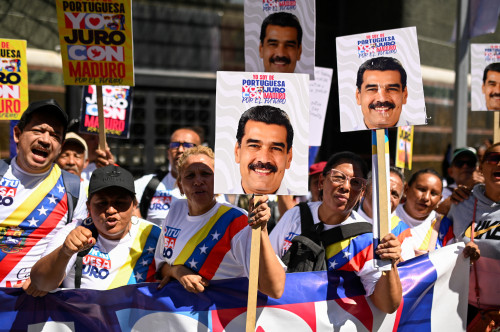By Yousef Saba and Sarah El Safty
DUBAI (Reuters) -Oil giant Saudi Aramco on Tuesday reported a 3.4% fall in second-quarter profit on lower crude volumes and softer refining margins, yet kept its generous dividend policy unchanged, with $31.1 billion in payouts for the quarter.
Aramco posted second-quarter net income of 109.01 billion riyals ($29.03 billion) in the three months to June 30, beating a company-provided median estimate from 15 analysts of $27.7 billion.
The company declared dividends of $31.1 billion, including $10.8 billion in performance-linked payouts. Aramco introduced the performance-linked dividends last year, on top of a base dividend that is paid regardless of results, an uncommon practice among listed companies.
Aramco, the world’s most profitable oil company and top oil exporter, has long been a vital source of income to Saudi Arabia, which is spending vast sums under Crown Prince Mohammed bin Salman’s Vision 2030 plan to end what he once called the kingdom’s “oil addiction.”
Aramco’s dividend provides “a greater transfer of oil revenue to the government and (limits) the size of the fiscal deficit,” said Monica Malik, chief economist at ADCB.
Aramco said on Tuesday it expects $124.2 billion in total dividends in 2024, roughly in line with previous guidance of $124.3 billion.
The performance-linked dividend distributions this year are for the combined 2022-2023 period and are calculated as 50-70% of annual free cash flow, net of the base dividend and other elements.
For 2025, those payments will be based on 2024’s annual results alone, Chief Financial Officer Ziad Al-Murshed said on an earnings call. The payouts this year were on the upper end of the 50-70% range.
After selling 0.7% of Aramco for $12.35 billion last month, the Saudi government still directly holds nearly 81.5% of Aramco and Saudi’s sovereign wealth fund PIF holds another 16% of and also benefits from Aramco’s dividends.
“There are still many ways that the government can extract funds from Aramco, including further share sales,” Malik said.
CAPEX RISES
Aramco’s capital expenditure in the second quarter rose nearly 14% year-on-year to $12.1 billion, partly due to investments to maintain crude maximum sustainable capacity at 12 million barrels per day and expansion of its gas business.
Saudi Arabia, de facto leader of the Organization of the Petroleum Exporting Countries, is pumping roughly 9 million barrels per day (bpd), about three quarters of its capacity. It has made cuts along with other OPEC members and allies including Russia, together known as OPEC+.
Brent crude was trading at about $76.7 on Tuesday, its lowest since January, amid concerns about global economic growth. Aramco’s shares rose about 1.7% on Tuesday, but are down about 17% this year, trailing the performance of Western oil majors.
Lower output and prices have pressured Saudi state finances. The government, Aramco and PIF have all raised billions of dollars in capital markets this year.
Al-Murshed said Aramco’s $6 billion bond sale last month was not to fund any specific project and the main intention was to reestablish Aramco’s yield curve after being absent from the debt market for several years.
($1 = 3.7545 riyals)
(Reporting by Yousef Saba and Sarah El Safty; Editing by Muralikumar Anantharaman, Tom Hogue and Susan Fenton)



